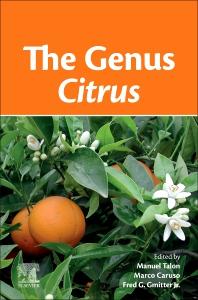Biodiversity Reading time 2 min
The Genus Citrus
Published on 24 February 2020


Because citrus is among the most difficult plants to improve through traditional breeding, citrus researchers, institutions and industries must quickly learn to adapt to new developments, knowledge and technologies to address the biological constraints of a unique fruit-tree such as citrus. Despite the challenges of working with citrus, tremendous progress has been made, mostly through advances in molecular biology and genomics. This book is valuable for all those involved with researching and advancing, producing, processing, and delivering citrus products.
1st Edition. Editors: Manuel Talon (IVIA, Spain), Marco Caruso (CREA, Italy) Fred Gmitter, jr. (University of Florida-CREC). Published on 17th January 2020, 538 p.
Chapter 4 - Citrus taxonomy
By Patrick Ollitrault (Cirad), Franck Curk (INRAE), Robert Krueger (USDA, Riverside)
Citrus classification remains an unresolved problem. In the first part of this chapter, after a short description of their morphological characters, the justification for the separation of the “true citrus” group into six genera is discussed, based on their reproductive biology and plastome phylogenetics. It is concluded that all true citrus plus the genus Oxanthera should be joined within the genus Citrus. Moreover, despite full sexual compatibility between the Citrus species sensu Swingle, the phenotypic and molecular differentiation between the ancestral taxa (C. maxima, C. medica, C. micrantha, C. reticulata) of the cultivated forms fit with phylogenetic species concepts based on diagnosability and monophyly. In the second part, after an historical perspective, the species rank of the genus Citrus is discussed based on the recent phylogenomic data and a new concept is proposed for citrus classification. Finally, in the third part, the phenotypical diversity of the Asian ancestors of edible citrus and of the most important horticultural groups of interspecific origins is presented after a discussion of the implication of the reticulate evolution coupled with apomixis on the phenotypical diversity structure of edible Citrus.
